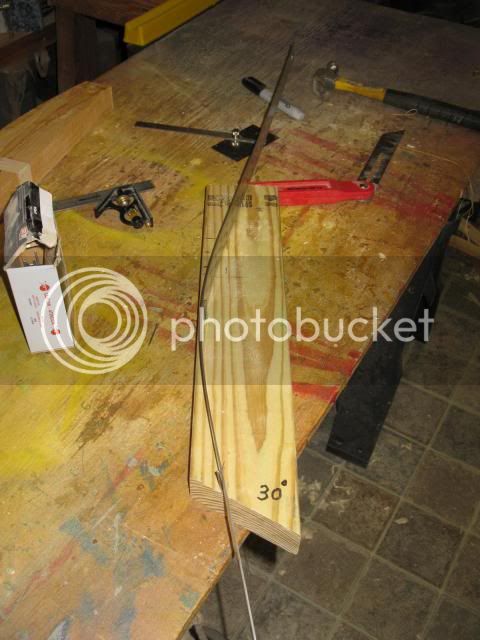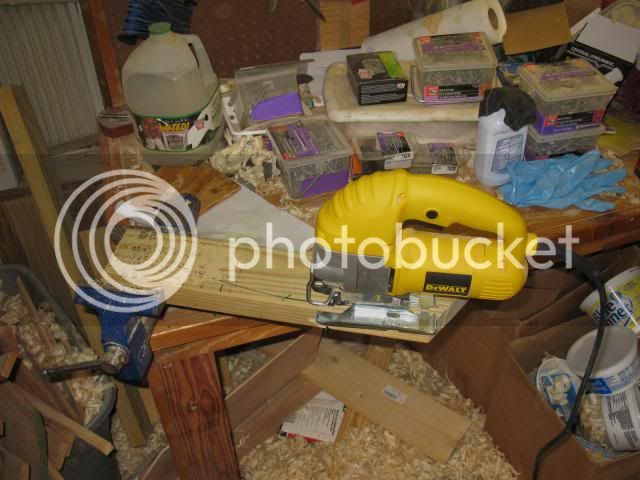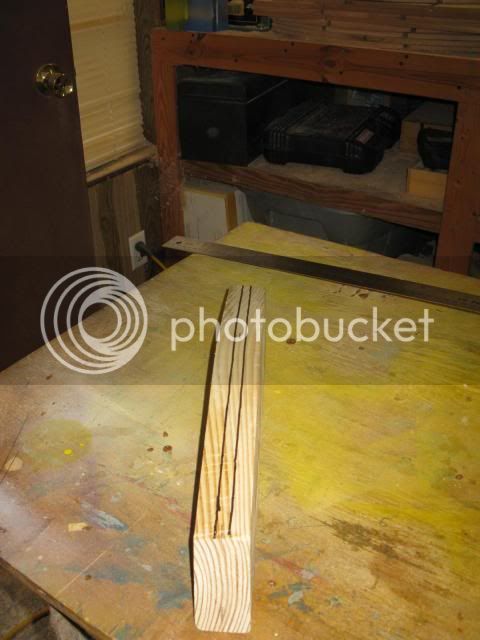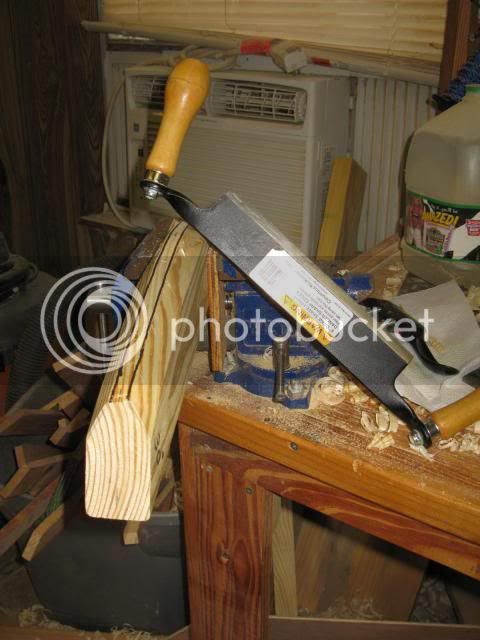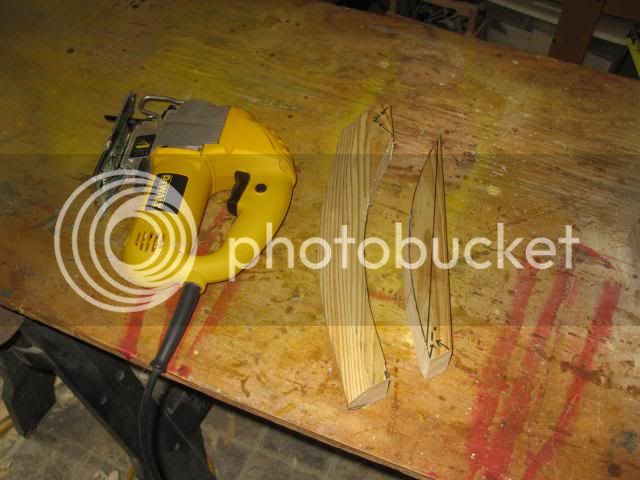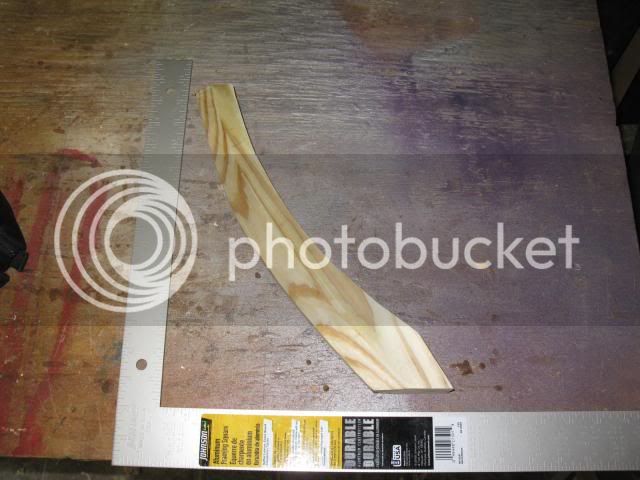Beekeeper, you are RIGHT on time!

Although I'm still about a month away from starting a build, I was wondering how I could make the curved stem for a marsh style pirogue, as well at the tapered stem called for in Kieth's plans for his swamp pirogue. I considered renting a band saw for a day, but I knew it could be done without one.
What I came up with starts out like your method, but after marking the front face of the curved stem, and then scribe a line on the sides of the stem where the cut would come out, I figured I'd connect the face line and side lines with a series of
careful saw cuts. Then I'd use either a wood chisel or sharp hatchet to remove that wood, (not owning a adze,) and then finish up with either a plane or sander.
I've seen this method of wood shaping covered in several books on traditional boat building books, as well as watched it being done in a boat yard down in Tarpon Springs, where they were building plank-on-frame sponge boats.
As for the tapered stem called for in Keith's plans, I might be able to make the taper on the table saw, if I can get my Mk1Mod2 eyeballs working right. Otherwise, I'd go back to the above process.
What YOU have done is to clearly demonstrate that it IS something I can do, one way or the other, without a band saw. Thanks!
I do believe seedtick has said that sometimes he's used a larger piece of wood for the stem, rather than a 2X4, so he could trim off the part of the stem that "stands proud." Cutting that away on the smaller 2X4 might remove too much of the stem's strength. So maybe start out with a 4X4? (Could be cut down to a 3X4 or whatever would be workable.) Once shaped and the extra "proud" wood removed, it shouldn't add very much to the overall weight, I suspect.
Since you are posting about the boats ends, I'd like your opinion on the chines, inside chines for the marsh style, that is.
I have seen where it looks like seedtick attaches the chines to the sides first, then bends the sides on some forms and temporarily joins the sides and the ends, and at some point shapes the ends of the chines to allow the sides to fit together at the ends. Then the stems are place into position with the bottom of the stems sitting on top of the chines at the bottom.
What I was thinking of was to cut the stems longer than they will need to be, so they can be installed and then cut off flush with the bottom and top of the sides, with the chines either cut to be fitted flush with the stem, or maybe even notched into the stem. This would probably take some dry-fitting a couple of times before the final glue and nailing, but might be worth the trouble.
What do you think? (Or anyone else, for that matter.)
Mike S.
Spring Hill, FL
